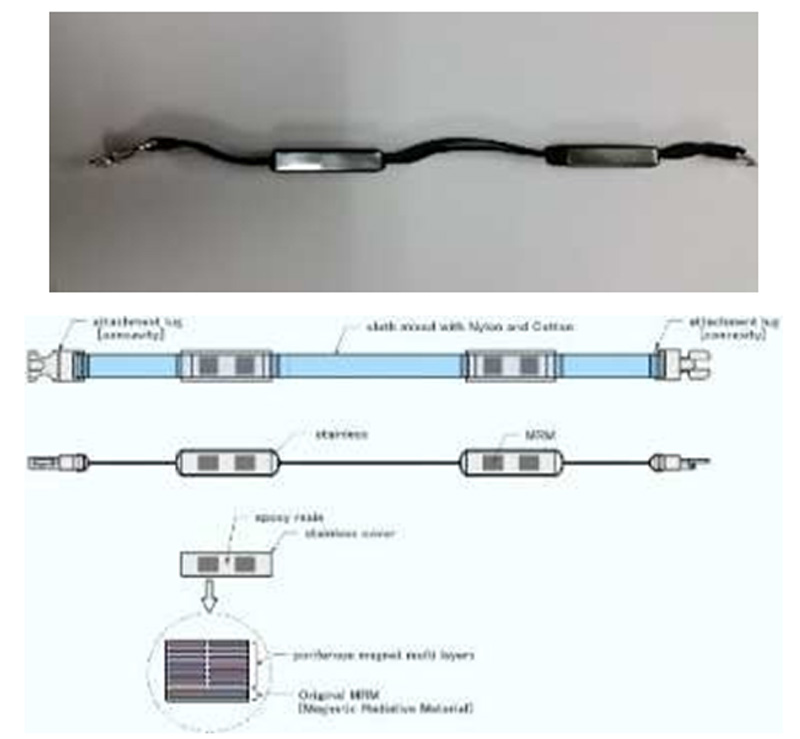Introduction
Japan System Planning Corp., Ohu University, Japan University of Health Sciences, and Tokyo University of Science succeeded for the first in the world to lower blood pressure of human in a test using Pipetector, a device that could reduce red rust in water pipes to black rust.
Together, the organizations presented the research result at the 18th World Congress of Basic and Clinical Pharmacology in Kyoto in July 2018.
Result
Change in blood pressures
We succeeded to reduce blood pressures of all 19 subjects in the test using Pipetector.
On the other hand, blood pressure did not change at all in the other test using the magnetic device.
Change in brain waves
All subjects’ alpha waves increased, while their beta waves decreased in the test using Pipetector, thus proved it could cause relaxation effects to the brain.
We however could not confirm any change in either alpha or beta waves in the other test using the magnetic device.
Utilizing particular electromagnetic waves emitted from Pipetector for human circulatory system to achieve relaxation effects and control blood pressure
Summary
Pipetector, a device to resonante hydrogen atom in water, displays reducibility. In the previous experiment we tested how a miniatured device could reduce oxidation stress of human by inserting a pointing finger for 10 minutes in the device.
This time we measured the device’s influence on both blood waves and blood pressures.
Method
We used a device for wrist-use that has the equal performance as the above device in the test. Obtaining consent from all 19 subjects, we monitored their blood pressures for 24 hours with a portable blood pressure monitor TM-2430 (A&D). On the first day, we tested their blood pressures once every 60-minute without having them wear any device. On the following day, we measured their blood pressures in the same conditions as the test a day before except having the subjects wear a magnetic device as dummy. On the third and final day, we had them wear the wrist device to measure their blood pressures again. It was all blind testing.
We then tested the subjects’ blood waves with TSDN151, a small wireless multi-function sensor developed by ATR-Promotions Corp. The subjects had their eyes mostly opened while measuring their brain waves for eight minutes without a device. After that, we measured their brain waves for two minutes with their eyes fully closed. Then, we had them wear the magnetic device on their wrist and measured their brain waves in the same process. After 60 minutes, we again tested their brain waves.

We fixed two parts, which are originally used in Pipetector, as a pair on a belt to make them into a single device and had the subjects wear it on their wrist. The central “core” part of Pipetector is circled in red. We fixed a ceramic to a layer of magnetite.


When we took off the wrist device from the subjects and tested their brain waves for 10 minutes, we confirmed a large increase in alpha/beta wave ratio. On the contrary, we could not observe any influence on their brain waves under the same conditions as the former test except for using a magnetic device (refer to the figure No. 4 upper half). The increase in alpha/beta wave ratio in a test with Pipetector might be due to increase of alpha waves and decrease of beta waves (refer to the figure No. 4 below half). We found Pipetector can bring about relaxation effects.

Pipetector for wrist-use increased brain waves’ alpha/beta wave ratio and RRI, and also decreased low frequency/high frequency ratio. All these are the results of the effect of controlling blood pressure as shown in the figures No. 6 through 8.

We measured the subject’s blood pressures with and without Pipetector, four hours each.
As a result, Pipetector reduced the subject’s average blood pressure and the blood pressures during both contraction and expansion periods of blood vessels.

We aggregated the histogram showing the 19 subject’s blood pressures we measured in the tests with and without Pipetector. The below figure No. 8 displays the result of blood pressure testing.

Measuring the subject’s blood pressures with Pipetector for 24 hours, it decreased blood pressures between 12 o’clock and 6 p.m. the most.
Conclusion
- Pipetector induces relaxation effects to our brain by changing alpha/beta wave ratios as well as low frequency/high frequency ratios of circulatory system.
- Pipetector brings about relaxation effects by extending RRI and also shortening R amount.
- Pipetector for wrist-use causes relaxation effects as a new means to prevent several diseases triggered by high blood pressure.
Researcher’s profile
- Ohu University Dr. Yuichi Koike, Dr. Kuramitsu Kyogo and Dr. Naomasa Yamamoto in School of Pharmaceutical Science
- Dr. Katusuki Kumano and Mr. Noboru Kamimeka from Japan System Planning Co., Ltd.
- Japan University of Health Science Dr. Haruo Nogami in Department of Physical Therapy
- Tokyo University of Science Dr. Fumio Fukai in Department of Medical and Life Science, Faculty of Pharmaceutical Sciences